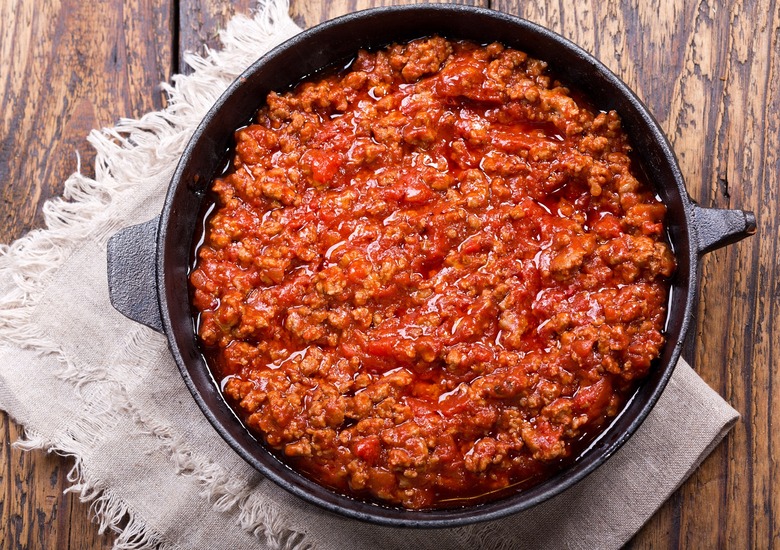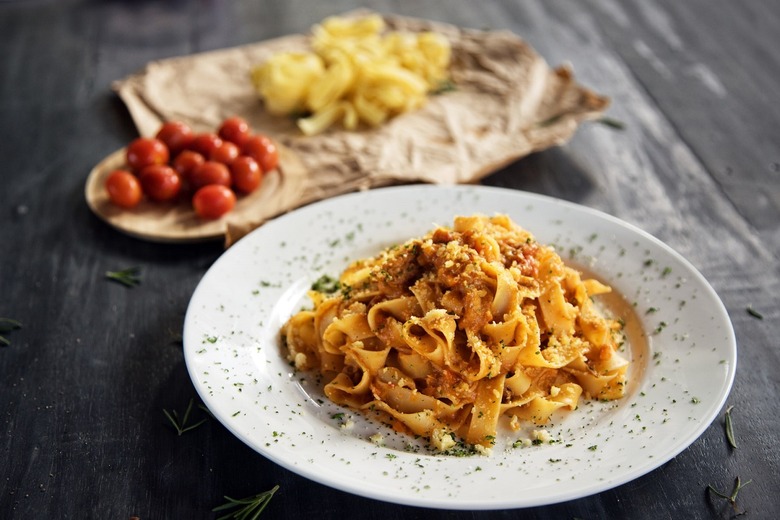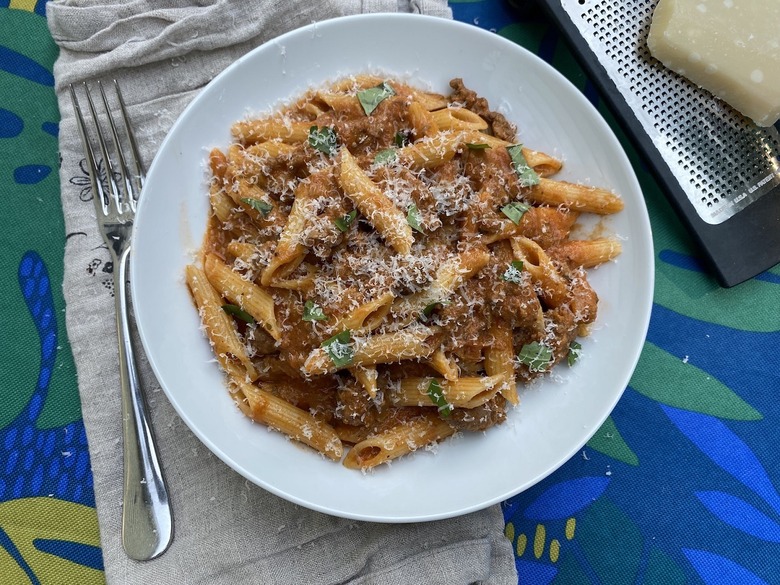What Is Bolognese Sauce?
Whether you call it meat sauce, ragu Bolognese or another name, there's something soulfully satisfying about the marriage of meat, tomatoes and pasta. But there's more to an authentic Italian Bolognese sauce than simply combining ground beef and a jar of marinara.
Pasta Recipes for Whenever You Need a Pick-Me-Up
Here's everything you want to know about where this iconic sauce came from, what makes a true Bolognese — if there is such a thing — and what kind of pasta pairs best with it.
What is the history of ragu Bolognese?
The term ragu, which generally refers to any variety of slow-simmered meat sauce, predates Bolognese. Not all ragu is Bolognese, but all Bolognese is a ragu.
Trying to pinpoint the exact origins of ragu Bolognese is a dizzying effort. Common myth indicates it originated in the city of Bologna, but other accounts credit Rome, Naples or Imola as the birthplace of sauce. The truth is probably a combination of all of these as regional versions of ragu converged over time. Whatever the case, the Bologna Chamber of Commerce capitalized on its claim to Bolognese and registered the "official" recipe devised by Accademia Italiana della Cucina in 1982.
Early Bolognese recipes, such as that in Pellegrino Artusi's seminal 1891 Italian cookbook, "La Scienza in Cucina e l'Arte di Mangiar Bene," ("Science in the Kitchen and the Art of Eating Well") bear little resemblance to what we think of as Bolognese; Artusi's recipe called for cubed veal rather than minced beef and beef stock in place of tomatoes. That's right—it is completely without tomatoes.
So, what is Bolognese?
Like all popular recipes, Bolognese evolved. As American soldiers returned from Italy after World War II and Italian immigrants came to the United States in waves, the dish took on a life of its own.
On this side of the Atlantic, Bolognese refers to a sauce made of ground beef and tomatoes. A similar version is also incredibly popular in Germany and other countries. In Italy, however, such a dish can be found primarily in tourist restaurants.
A true Italian Bolognese today uses finely chopped flank steak rather than ground chuck, is not as tomato-heavy, features milk and beef broth and is simmered for hours to get a complex flavor. Dumping a jar of sauce into ground beef, it is not.
What kind of pasta goes with Bolognese sauce?
Artusi, in his early recipe, suggested denti di cavallo — horse's teeth — which is a tubular pasta similar to ziti.
But some purists argue that the only pasta shape one should pair with this meaty ragu is tagliatelle, or perhaps other wide, long noodles like fettuccine or pappardelle, if you must.
Even spaghetti is considered too thin to hold up to such a substantial sauce; spaghetti Bolognese — spag bol, as some call it — is basically a foreign dish. In Italy, true tagliatelle alla Bolognese typically goes a step further with fresh, rather than dried, pasta.
Yet Bolognese is bigger than its origins, and nowadays, the meat sauce is enjoyed around the world and in harmony with every pasta shape imaginable. We aren't the pasta police; we don't judge anyone for enjoying their favorite combos, no matter how iconoclastic they may be. And if you don't feel like spending the day simmering a sauce, there are plenty of fabulous pasta recipes that are ready in about half an hour.
How to make pasta Bolognese
As we've established, there are numerous pasta Bolognese recipes. Here are two options:
Traditional Bolognese Ragu
According to the "official" recipe, the sauce should start with a base of pancetta cooked with the holy trinity of carrots, celery and onion, called sofrito in Italian. Minced or ground beef is added, followed by milk, wine, beef broth and tomato paste in stages. It's simmered for a few hours, then finished with a dash of cream. The authentic version, served with tagliatelle, is far less tomato-heavy and creamier than the pasta Bolognese many of us are probably used to.
Weeknight Pasta Bolognese
On the other side of the spectrum, there's the 30-minutes-or-less,ground-beef-to-the-rescue Italian-American meat sauce that's popular in households the world over. While it may not be authentic, it's still darn delicious. This quickie version uses jarred sauce for convenience but doctors it up with garlic, wine and cream to make it something special. It doesn't take any longer than using the jarred sauce alone and the results are well worth it.
For the Weeknight Pasta Bolognese recipe, click here.


